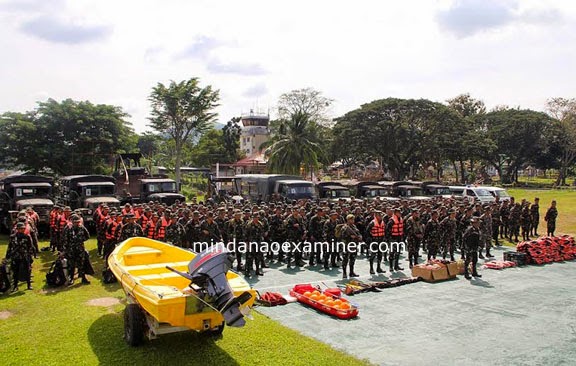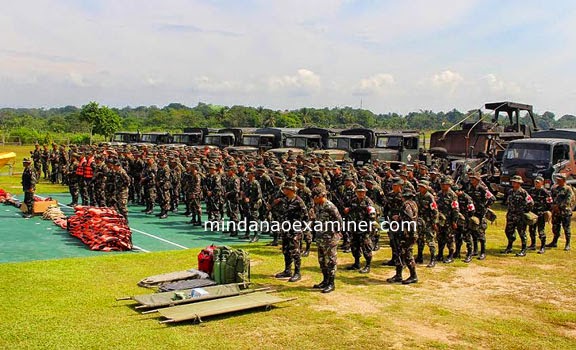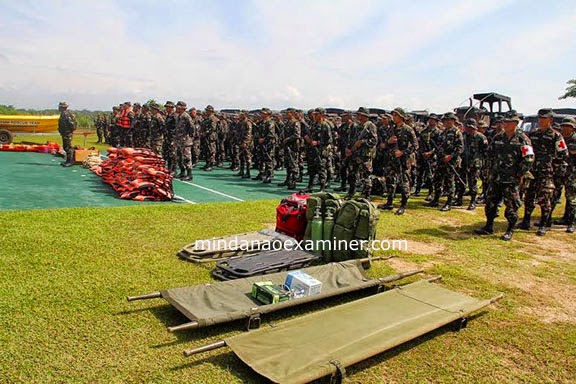
MAGUINDANAO – The International Red Cross and Red Crescent Movement is gearing up for a humanitarian relief effort in response to the impact of Typhoon Hagupit (locally known as Ruby), which is sweeping across central Philippines and southern Luzon island.
Although the storm has weakened since it first made landfall on December 6, it continues to traverse slowly across islands in the Sibuyan Sea with winds gusting up to 150 Kph. The heavy rains accompanying the typhoon are the greatest cause for concern. Chairman of the Philippine Red Cross, Richard Gordon, warned against complacency.
“At this stage, we don’t know the full extent of the damage caused by Typhoon Hagupit. It will linger over the Philippines and we can expect incessant rains to continue for the next few days. We are very concerned about the safety of people living in low-lying and mountainous areas who are at a high risk from flash-floods and landslides,” Gordon said in a statement sent to the regional newspaper Mindanao Examiner.
Hagupit is the strongest typhoon to hit the Philippines since Typhoon Haiyan struck last year. While not as strong as Haiyan, Hagupit could have significant humanitarian consequences for thousands of people living in its path, particularly those still recovering from the effects of Haiyan.
“This is the third consecutive year that the Philippines has been hit by a major typhoon, but swift and pre-emptive early warnings and evacuations by the government and the Philippine Red Cross have ensured that casualties have so far been minimal,” said Kari Isomaa, head of delegation of the International Federation of Red Cross and Red Crescent Societies in the Philippines.
Red Cross assessment teams visiting Samar Island and Southern Luzon found roofs blown off, trees brought down and electricity and communication lines cut in some areas. There are fears that the impact of the typhoon could be more severe in remote areas of northern Samar which have been so far inaccessible due to blocked roads.
“It is too early to give an accurate assessment of overall needs. Food, clean water, emergency shelter materials and primary health care could be among the priorities. The typhoon hit areas where poverty and vulnerability levels are very high, in particular within communities suffering the consequences of protracted armed conflicts,” said Pascal Mauchle, head of delegation of the International Committee of the Red Cross in the Philippines.
Further assessments are also being carried out to inland and coastal communities. Hundreds of Philippine Red Cross volunteers have also been mobilized to pack relief items and provide cooked meals to thousands of people who remain in evacuation centers.
“It is re-assuring to have the support of our partners in the International Red Cross and Red Crescent Movement. Over the past year they have stood with us to support the recovery of thousands of people who were affected by Typhoon Haiyan and they have also been helping us to meet humanitarian needs elsewhere in the country,” Gwendolyn Pang, Secretary General of the Philippine Red Cross, said.
United Kingdom
The Government of the United Kingdom also has actively monitored the progress of Typhoon Hagupit since it entered the Philippine Area of Responsibility.
In anticipation of likely needs, the British Embassy in Manila said it activated its crisis management plan, together with officials from government departments in London, with a focus on dealing with any emergencies that might affect British nationals as well as wider humanitarian relief for people in the path of the typhoon.
“Our network of community wardens in the areas where Hagupit went through provided real time accounts of the impact of the wind and rain. Fortunately, there were no reports of injury or loss affecting UK nationals,” the Embassy said in a statement sent to the Mindanao Examiner.
With over 700,000 people evacuated as a precautionary measure by Philippine government authorities and forward positioning of relief supplies, the impact has been less severe than it otherwise could have been on people living in Samar, Masbate, and Mindoro.
The British Ambassador, Asif Ahmad, said: “With Typhoon Ruby moving away from the Philippines, I want to extend Britain’s condolences to those who have lost relatives and friends. Yet again, the resilience and fortitude of the people of the Philippines has been tested and proven to be robust.”
“A much bigger tragedy has been avoided by the timely and effective evacuation of people in the predicted path of the Typhoon. I commend the Philippine Government for taking action and triggering emergency measures that have undoubtedly saved many lives. The relief operations being conducted by central and local government as well as agencies in the country are evidently up and running.”
He said the United Kingdom has already indicated its willingness to respond to any request for assistance from the Philippine Government.
Philippine troops were also mobilized to provide assistance to victims of the typhoon. The 6th Infantry Division in southern Philippines mobilized over 150 soldiers as members of the disaster rescue task group headed by Lt. Col. Gerardo Cap-atan, Jr.
Maj. Gen. Edmundo Pangilinan, commander of the 6th Infantry Division, ordered troops to be ready in case of emergency call. He said all members of the disaster and rescue team are well-trained and very knowledgeable on how to handle rescue scenarios. (Mindanao Examiner – Mark Navales)
Like Us on Facebook: https://www.facebook.com/mindanaoexaminer
Follow Us on Twitter: https://twitter.com/MindanaoExamine
Read Our News on: http://www.mindanaoexaminer.com/ and http://www.mindanaoexaminer.net/




